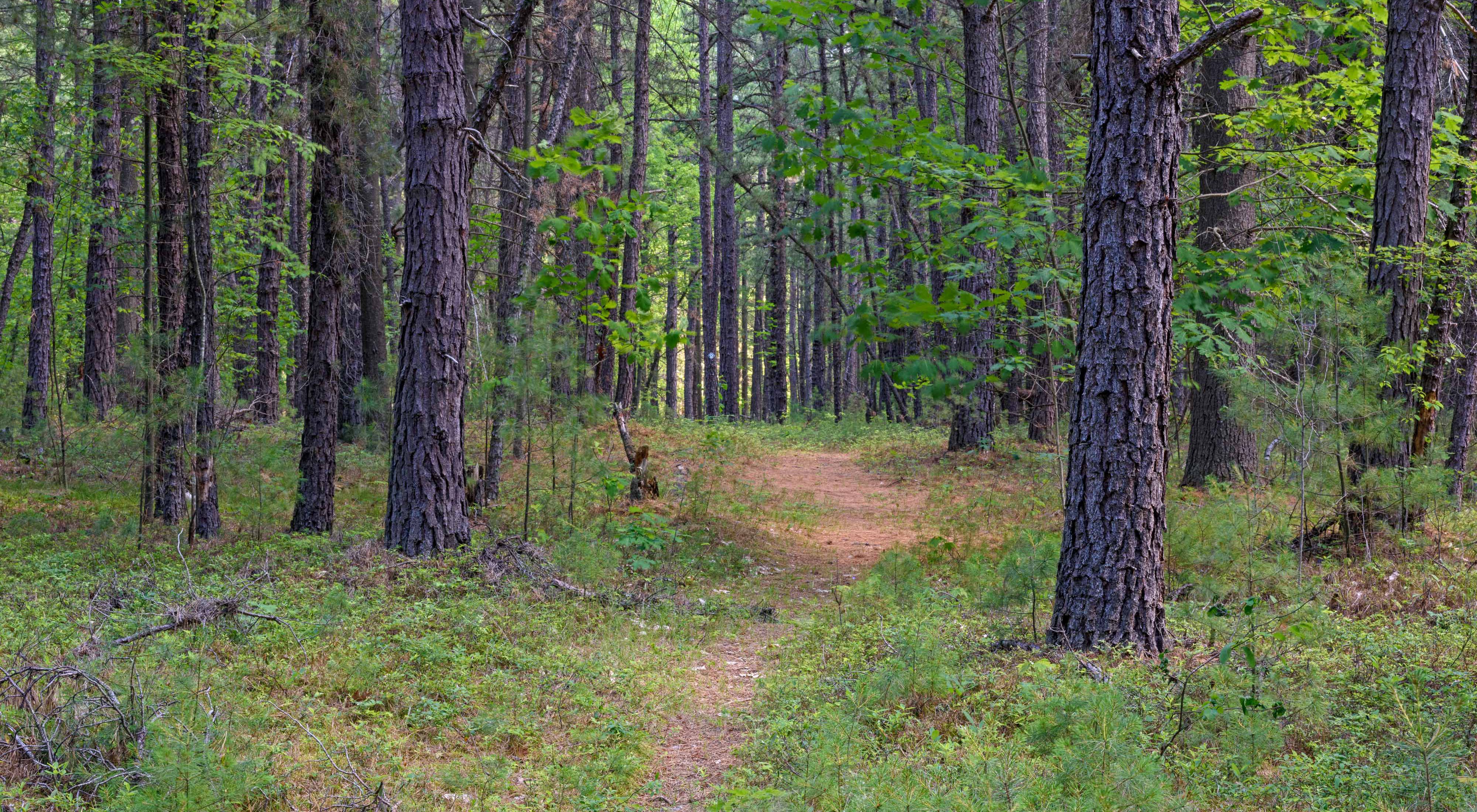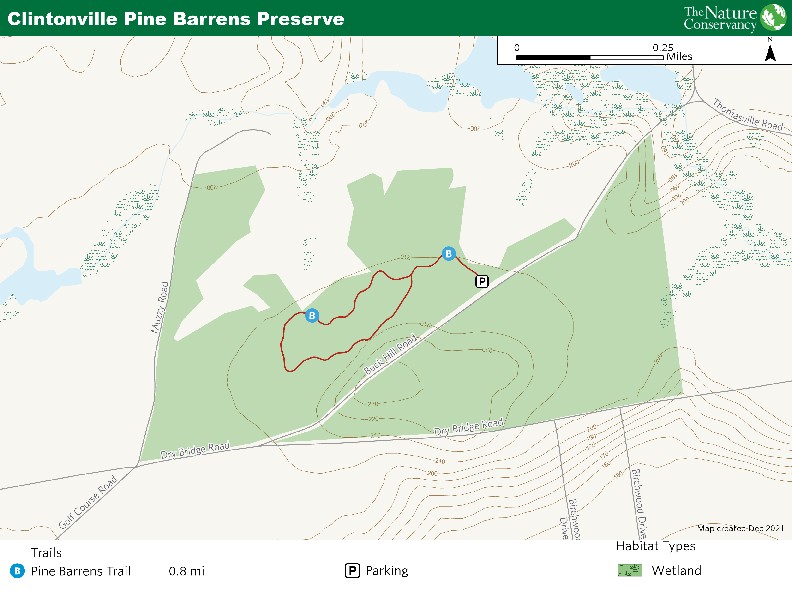Description
The Clintonville pitch pine-heath barrens sit on a sand delta deposited 12,000 years ago by glacial meltwater. The sandy, well-drained soil gives life to the unique pine barrens natural community.
Pitch pine-heath barrens are fire-dependent natural communities. Pitch pine trees require fire to reproduce or survive competition from non-fire-adapted species. Fire burns the pines' fallen needles and debris, releasing nutrients that prepare a seedbed for the regeneration of the forest and provides the heat necessary to open the cones and release seeds. Pitch pine is also capable of sprouting needles from buds underneath the thick bark after exposure to fire. You will also find maples, oaks, numerous plants and shrubs including blueberry, huckleberry, sheep laurel, sweet fern, bearberry, wintergreen, and pipsissewa. Two species that are present that you probably won't see are the pine pinion moth and the Acadian swordgrass moth. These moths are active at night and are sensitive to light. This may be the only site in New York where the pine pinion moth is found.
WHY WE WORK HERE
This is one of the best examples of a pitch pine-heath barrens community in New York. It provides habitat to rare plants including the prairie redroot, and two rare moths--the pine pinion moth and the Acadian swordgrass moth. It is this combination that makes the site of particular interest to The Nature Conservancy.

